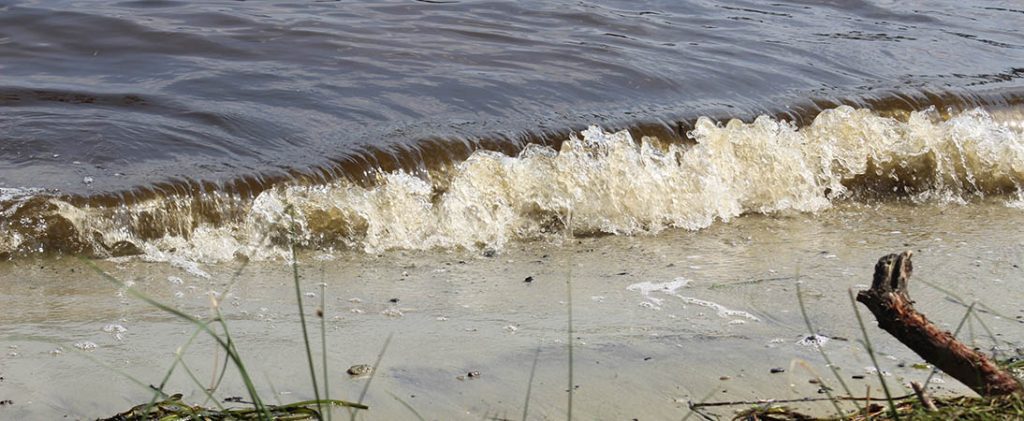
Slocum Creek in Havelock and N.C. Highway 11 boat ramp in Kinston failed to meet recreational water-quality standards on the lower Neuse, but there’s another problem plaguing local waterways this week: fish kills.
In the past week, environmental nonprofit Sound Rivers has received numerous reports of fish kills across the Neuse and Tar-Pamlico watersheds.
“What we’ve had this summer is more heat, more extreme storms dumping in lots of nutrient-laden runoff that fuels algal blooms and fish kills,” said Sound Rivers Executive Director Heather Deck. “This is a real-time result of climate change.”
For many years, the Neuse and Tar-Pamlico have experienced fish kills during summer months, but Deck says people should avoid thinking of fish kills as a natural occurrence.
“While it may seem like a normal occurrence, it’s anything but normal for our rivers,” Deck said. “It is another sign of rivers in distress from excessive nutrient pollution.”
Rain washes nutrients such as phosphorous and nitrogen, commonly found in fertilizers, sewage and animal waste, into waterways where they, with help from warm water temperatures, can cause algal blooms. Algal blooms can deplete dissolved oxygen other species use to survive, leading to fish kills like those being reported on the lower Neuse and Tar-Pamlico rivers and their tributaries.
“Many are doing good things to reduce nutrient pollution, but this is another sign of how much more we need to do,” Deck said. “Wetlands, vegetative buffers along the rivers — these actually remove nutrients from the water, but unfortunately protections for both are being weakened, and the regulatory agency that enforces the remaining protections is not adequately funded.”
Deck recommends avoiding swimming or recreating in waters in or near a fish kill, and that goes for pets, too.
“If there’s a fish kill, it may be caused by a harmful algal bloom, and those can cause health issues for both people and pets,” she said.
On a local level, Sound Rivers conducts Swim Guide, an international water-quality program, and lets the public know whether it’s safe to swim at 54 popular recreational sites across the Neuse and Tar-Pamlico watersheds. Each week, a team of Sound Rivers’ volunteers gathers water samples which are then tested for E. coli in fresh water and enterococci in salt water by Sound Rivers’ staff. The pass/fail results are released each Friday to the public through local media.
Sound Rivers’ Swim Guide program is sponsored by the Water-Quality Fund in memory of Gene Pate, Grady-White Boats, Public Radio East, Cummins, UNC Lenoir Health Care, the Albemarle-Pamlico National Estuary Program, Z. Smith Reynolds Foundation, UNC Pavel Molchanov Scholars, ECU SECU Public Fellows Internship Foundation, City of Greenville, Lake Royale Property Owners Association, Melinda Vann and David Silberstein, and Wendy and Tim Wilson.
To sign up for Swim Guide notifications, go to soundrivers.org/swimguide or text “SWIM” to 33222 for weekly water-quality text updates. For more information about Sound Rivers, visit soundrivers.org.
By Sound Rivers

